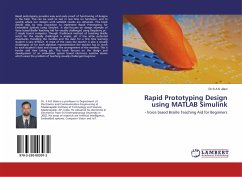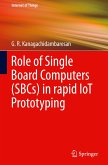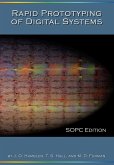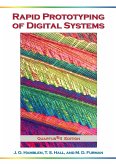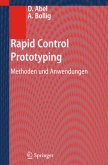Rapid prototyping provides easy and early proof of functioning of designs in the field. This can be used to test in real time on hardware, and to quickly adjust our designs until satisfied results are obtained. This book details step by step procedure to implement Rapid Prototyping for Embedded Systems using Simulink. It also focuses on design example of Voice based Braille Teaching Aid for visually challenged using Raspberry pi -2 single board computer. Though Traditional method of teaching Braille script for the visually challenged is simple, yet it has some potential drawbacks. Handling the marbles and the slate for a first time learning student is very difficult. In most of the cases the teacher is also a visually challenged, so for each alphabet representation the teacher has to reach to each student's slate and change the arrangement of the marbles. This is harder and time taking job. This book focuses on the design and development of an embedded system based electronic assistive device which eases the problem of teaching visually challenged beginner.

